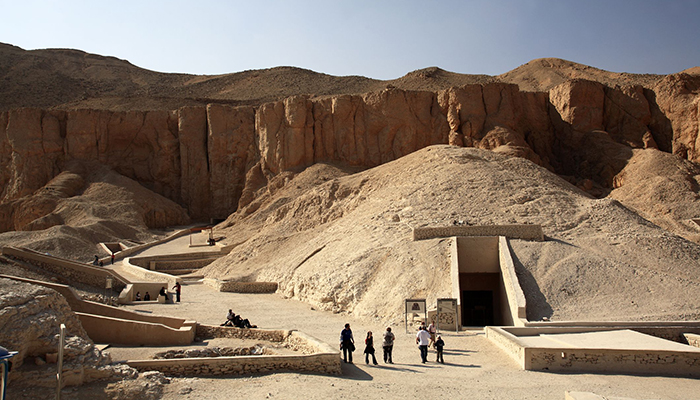
The Valley of the Kings
Located near Luxor on the west bank of the Nile River in Egypt, served as the burial site for pharaohs, powerful nobles, and royals during the New Kingdom period (around 16th to 11th centuries BC). It’s renowned for its monumental tombs carved into the rock, hidden amidst the desert hills.
This ancient necropolis contains over 60 known tombs, each designed to safeguard the pharaohs’ bodies, possessions, and treasures for the afterlife. Among the most famous tombs is that of Tutankhamun, discovered nearly intact in 1922 by Howard Carter, containing an astonishing array of treasures and artifacts.
The valley boasts tombs of various sizes and complexities, with corridors, chambers, and intricate decorations featuring religious texts, spells, and elaborate scenes depicting the journey to the afterlife. The decorations and inscriptions offer invaluable insights into ancient Egyptian religious beliefs and practices.
The tombs were meticulously constructed and hidden to deter tomb robbers, utilizing complex layouts and protective measures, although many were eventually plundered over the centuries.
Each tomb was equipped with various chambers, including the burial chamber, storage rooms, and corridors adorned with vivid and symbolic representations, showcasing the pharaoh’s journey to the afterlife and the trials they would face.
Despite the valley’s name, not all buried within were kings; some tombs belong to queens, princes, high-ranking officials, and members of the royal court, each reflecting the status and influence of the deceased.
The Valley of the Kings stands as a testament to ancient Egypt’s beliefs in the afterlife, its architectural prowess, and the wealth and power of its rulers, drawing visitors worldwide to explore its mysteries and marvel at its historical significance.